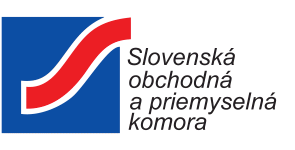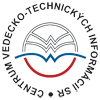Summary:
A team of Polish scientists has developed a device that both ventilates and recovers heat in spray booths and other places where paint particles may settle on the ducts walls. Implementation of the offered solution allows one to reduce costs due to i.a. reuse of recovered heat and extended lifespan of the ventilation system. Technical cooperation and license agreements are offered.
Description:
A research team from northwestern Poland that specialises in security engineering has developed an air ventilation system with a capacity to recover heat. The solution is intended for spray booths but may be also used in other places where ventilation systems are exposed to paint particles.
To serve their purposes, all paint booths require a constant exchange of fresh, clean air with their environment. This air usually needs to have a specific temperature so as to dry varnish or paint faster. But in the spraying process, paint particles deposit on the walls of the air ducts. This leads to a deterioration/blockage of air flows and renders such ventilation systems unusable. Moreover, paint residue increases thermal insulation, thus reducing the effectiveness of cross-flow recuperators – a type of heat exchanger that is the industry standard for heat recovery ventilation systems. Also, in most cases, the construction and placement of the cross-flow recuperators make their cleaning difficult/impossible.
Addressing these issues, the scientists have developed their own heat recovery ventilation device that consists of two ducts responsible for air flows. Inside one of them, a recuperator and special air-offtake canal are placed to recover the heat. The second duct is solely dedicated to air exchange. By shifting the position of a valve, the user can choose through which duct the air will pass. In order to increase/stabilise the temperature in a paint booth, the heat recovering duct should be chosen so that energy (heat) retrieved from the expelled air is used to warm the air that is forced inside the booth. If the user does not wish to heat the booth or even wants to cool it, he/she can choose air ventilation without heat recovery (by changing the position of the valve). The unused heat is then expelled with the air and thus helps to warm the room containing the paint booth. The position of the heat exchanger and the shape and size of its tubes have been designed to allow easy access and cleaning, making the offered solution eco- and financially friendly.
The scientists would like to see their invention produced on a mass scale. To make it ready for that, they are looking for companies that are interested in cooperation under the technical cooperation agreement. A partner will be responsible for providing means necessary to adjust the technology for industrial implementation and mass production. In turn, the scientist will be responsible for all the testing and adjustments. They are also interested in licensing the technology to a partner who will develop the prototype, scale-up its production, manufacture the ventilation system and make it commercially available for the final customers. The scientists will, in turn, lend their knowledge and expertise in all stages of the process.
Type (e.g. company, R&D institution…), field of industry and Role of Partner Sought:
License agreement:
- Type of partner: paint/coating/varnish industry, automotive industry;
- Specific area of the activity of the partner: the client is looking for automotive plants, spray booth manufacturers and paint shops;
- Role of partner sought: to construct the prototype and manufacture the ventilation system on a mass scale.
Technical cooperation agreement:
- Type of partner: paint/coating/varnish industry, automotive industry;
- Specific area of the activity of the partner: the client is looking for automotive plants, spray booth manufacturers and paint shops;
- Role of Partner Sought: to provide means, including their existing technological capacities, necessary to develop the invention and adapt it for the industrial production.
Stage of Development:
Concept stage
Comments Regarding Stage of Development:
Documents regarding implementation strategy and pricing of the technology have been prepared.
IPR Status:
Secret Know-how
Comments Regarding IPR Status:
Polish and European patents have been granted.
External code:
TOPL20200818001








